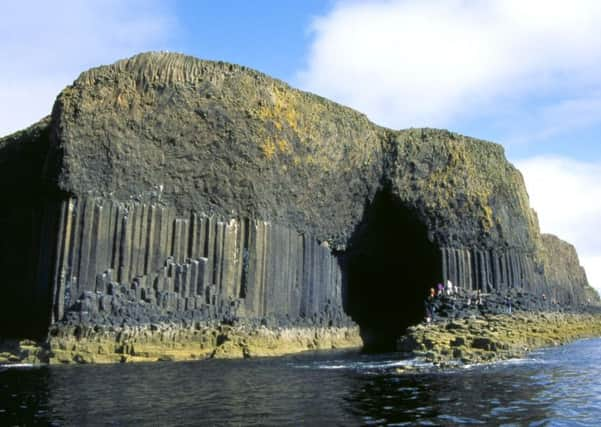Staffa '˜home to humans' 3,800 years ago


Archaeologists working with National Trust for Scotland have discovered the first clear evidence for human activity during the Bronze Age on the island, which sits to the west of Mull.
Further research will be carried out to determine whether Staffa was home to a permanent settlement or visited as a place of ritual. Radiocarbon testing on a burnt grain of hulled barley recovered from a small pit has now revealed there was human activity on Staffa some time between 1880-1700 BC.
Advertisement
Hide AdThis is up to 3,400 years earlier than previously known about.
Derek Alexander, the National Trust for Scotland’s Head of Archaeological Services, said: “This is our fifth season out at the island to investigate its past. Each time we go there we add another little piece of the jigsaw.
“This is a really significant find. It seems likely that people in the past were just as curious about their surroundings as we are. We can only imagine what Bronze Age people may have thought of the geological marvel that is Fingal’s Cave.
“Our next objective is to understand whether this evidence represents domestic occupation on the island or something a bit more ritualistic.”
Distinctive decorated prehistoric pottery has also been recovered.
Staffa, best known for Fingal’s Cave, was ‘discovered’ for a modern audience by botanist Joseph Banks in 1772. While it became popular with tourists and European cultural figures, including Wordsworth, Mendelssohn and Turner, little was known about its deep past and archaeology - until now.
Advertisement
Hide AdRadiocarbon tests previously dated human activity on Staffa to the 15th or 16th Century.
The work on Staffa was undertaken as part of the Historic Archaeology Research Project, Staffa (HARPS).
Advertisement
Hide AdThe project aims to fill an important gap in the archaeological knowledge of one of Scotland’s best-known maritime landscape features using a range of techniques, from archaeological excavation to the latest photographic analysis and audio analysis.
The project is a partnership between the National Trust for Scotland, the Glasgow School of Art’s (GSA) School of Simulation and Visualisation, and the Universities of Glasgow and Stirling, with funding support from the Trust’s London Members’ Centre and the Society of Antiquaries of Scotland.
Stuart Jeffrey, reader in Heritage Visualisation at GSA, said: “These finds are really important, enabling us to push our knowledge of human activity on the island back thousands of years.
“The ways in which Staffa has excited the modern creative imagination must surely have had echoes in the past. This new evidence clearly shows significant prehistoric activity on the island and allows us to start thinking about how that activity relates to Staffa’s stunning landscape and geology.
“Being able to unravel the already amazing story of Staffa even further is an exciting and tantalizing prospect.
“There is a growing archaeological interest in Staffa and the HARPS project supported by presentations at international archaeological conferences in the UK and Germany as well as at the Association of Critical Heritage Studies meeting in China next month. “
